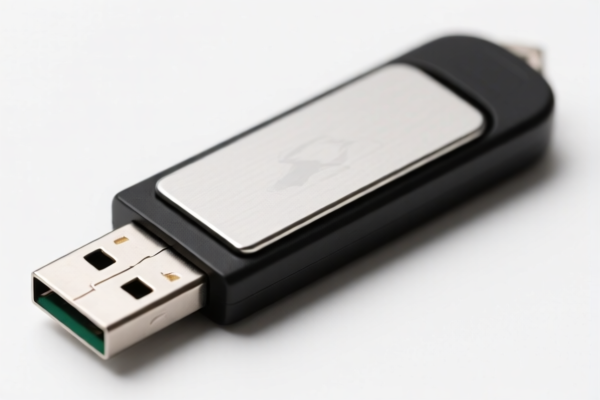| HS Code | Official Doc | Tariff Rate | Origin | Destination | Effective Date |
|---|---|---|---|---|---|
| 8523510000 | Doc | 37.5% | CN | US | 2025-05-12 |
| 8523590000 | Doc | 55.0% | CN | US | 2025-05-12 |




External Hard Drive
An external hard drive is a portable storage device that connects to a computer via a USB port or other interface, providing additional data storage capacity. Unlike internal hard drives, which reside within a computer case, external hard drives are self-contained in an enclosure and can be easily transported and connected to different computers.
Material
- Enclosure: Typically constructed from plastic, aluminum, or a combination of materials to provide protection and heat dissipation. Aluminum enclosures are common for their durability and ability to manage heat effectively.
- Platter(s): Made of aluminum alloy or glass, coated with a magnetic material to store data.
- Spindle Motor: Utilizes a motor to spin the platters at high speeds.
- Read/Write Heads: These components, often constructed with materials like alloys and magnetic components, read and write data to the platters.
- Circuit Board: Contains the electronics that control the drive's operation and interface with the computer.
Purpose
The primary purpose of an external hard drive is to:
- Expand Storage Capacity: Increase the total amount of storage space available to a computer.
- Data Backup: Create copies of important files for data protection and disaster recovery.
- Data Transfer: Easily move large files between computers or share data with others.
- Portable Storage: Provide a convenient way to store and transport data.
Function
External hard drives function by:
- Data Encoding: The computer sends data to the drive, which encodes it into magnetic signals.
- Magnetic Recording: The read/write heads write these magnetic signals onto the rotating platters.
- Data Retrieval: When data is requested, the read/write heads read the magnetic signals from the platters.
- Signal Conversion: The drive converts the magnetic signals back into digital data that the computer can understand.
- Interface Communication: The drive communicates with the computer through a USB or other interface, transferring data back and forth.
Usage Scenarios
- Personal Backup: Users regularly back up their documents, photos, videos, and other important files.
- Content Creators: Photographers, videographers, and graphic designers store and transport large media files.
- Gamers: Store game files and save data.
- System Imaging: Create full backups of entire computer systems.
- Software Installation: Install and run software from the external drive.
- Data Archiving: Store infrequently accessed data for long-term preservation.
Common Types
- Portable Hard Drives: Small, lightweight drives designed for easy transport. Typically powered by USB. Capacities range from 500GB to 5TB or more.
- Desktop Hard Drives: Larger drives designed for use at a fixed location. Often require an external power adapter. Capacities can range from 1TB to 20TB or more.
- Solid State Drives (SSDs): Utilize flash memory instead of rotating platters, resulting in faster speeds, greater durability, and lower power consumption. More expensive than traditional hard drives.
- Rugged Hard Drives: Designed to withstand physical shocks, drops, and extreme temperatures. Often used in demanding environments.
- Network Attached Storage (NAS) Drives: Connect to a network, allowing multiple users to access files from different computers. Typically feature multiple drive bays for increased storage capacity and data redundancy.
Interfaces
- USB 3.0/3.1/3.2: The most common interface, offering fast data transfer speeds.
- USB-C: A newer interface that offers even faster speeds and reversible connector.
- Thunderbolt: A high-speed interface often used for professional applications.
- eSATA: An older interface that offers fast data transfer speeds but is less common on modern computers.
External hard drives fall under the category of solid-state non-volatile storage devices used for recording sound or other phenomena. Here's a breakdown of relevant HS codes based on the provided information:
-
8523510000: This HS code covers discs, tapes, solid-state non-volatile storage devices, and "smart cards" for recording, including matrices and masters for disc production, specifically excluding products of Chapter 37 (Semiconductor media). The tax rate is a base tariff of 0.0%, an additional tariff of 7.5%, increasing to 30% after April 2, 2025, resulting in a total tariff of 37.5%. This code is applicable if the external hard drive is not considered a semiconductor media product as defined in Chapter 37.
-
8523590000: This HS code also covers discs, tapes, solid-state non-volatile storage devices, and "smart cards" for recording, including matrices and masters for disc production. However, this code is for "Other" types, excluding those specifically covered under 8523510000. The tax rate is a base tariff of 0.0%, an additional tariff of 25.0%, increasing to 30% after April 2, 2025, resulting in a total tariff of 55.0%. This code would be used for external hard drives that are considered other types of storage devices not specifically defined in 8523510000.
Important Considerations:
The distinction between 8523510000 and 8523590000 hinges on whether the external hard drive is classified as a semiconductor media product (Chapter 37). It is crucial to verify the material composition of the device to determine the correct HS code.
Customer Reviews
No reviews yet.